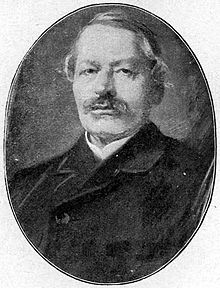The Five-Act Structure
We're delving into the world of Gustav Freytag with this one, but first some background:
The three-act structure of Aristotle dominated literary form until Horace started seeing the world in five acts.
Think about that for a minute. Aristotle was born in Greece in 384 BC and Horace, a Roman, wrote his Ars Poetica around 18 BC. We're talking about a big span of time. It's far too easy to condense timelines for things that happened a long time ago.
Now, because this isn't a history of literature from start to finish, jump way ahead with me to the Renaissance (from 1500 to 1642 when Puritans closed theaters). Renaissance dramatists loved the five-act structure. Think Shakespeare and Marlowe. Most of us are familiar with the five-act structure.
Then 19th-century dramatists like Norwegian writer Henrik Ibsen started getting adventurous again. (Yes, I did just include this picture of Ibsen because he looks awesome. Of course I did.)
Ibsen and others started experimenting with the 3-act structure--and even (gasp!) the four-act structure. What was the world coming to?
Enter Gustav Freytag, a German novelist and playwright, who reacted against this new trend. In his literary criticism, Freytag explains how the five-act structure works. From Freytag, we get the pyramid we are so often made to memorize in middle school:
But here's the big question:
How well does Freytag's Pyramid work for structuring our own novels today?
John Randall says, "No real story-teller follows Freytag's Pyramid in any sort of literal way," and yet just last year I attended a writing conference where the speaker talked at length about how essential it is to use Freytag to structure a good story.
The bottom line for me? If it helps you, use it. If not, don't stress about it. Writing is more art than recipe.





[...] Harness walks us through the five-act structure, while Kristen Lamb talks about how genre affects [...]
ReplyDelete